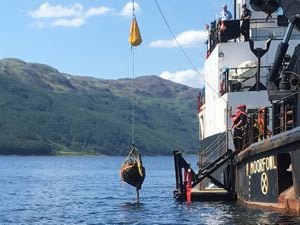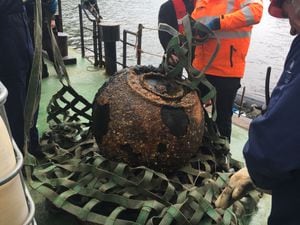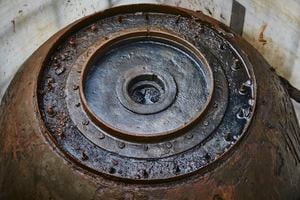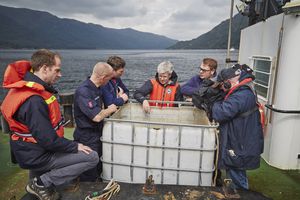Staffordshire scuba diver's daring mission to save bouncing bombs
A scuba diver has taken part in a daring mission to raise two historic bouncing bombs from a Scottish loch.

Around 200 highballs have lain at the bottom of Loch Striven in Argyll for almost 75 years since they were tested by the Royal Navy for use against enemy ships in the Second World War.
The iconic highball bombs were recovered in good perfect condition by divers from across the UK – and among them was Phil Grigg, a British Sub-Aqua Club member and open water instructor from Cannock.

Mr Grigg played a vital role in the mission which involved a series of exploratory dives at depths of up to 50 metres, to identify which highballs were suitable for recovery, and secure them for lifting.
Royal Navy divers then attached specialist lifting equipment to the heavy metal bombs, which were then winched out of the water by members of the Royal Navy’s Northern Diving Group (NDG), onto their workboat the Cato.
Now the aim is to donate the highballs to two museums so they can be put on display to the public, in time for the 75th anniversary of the Dambusters raid, in 2018.


The 37 year old, who works as an open water instructor, previously captured underwater footage of the highballs on a previous dive at Lock Striven back in 2010.
He said: “We struggled to locate the highballs initially but when we did finally work out where they were laying we found a few of them. I always hoped I’d go back one day.”
The divers were assisted by private company Unique System UK, which provided an underwater scanner to gather sonar images of the highballs in the loch, pulled by a workboat from fellow Scottish company Aspect Surveys.

The bombs, which are inactive, were secured by the divers ready for lifting by the Royal Navy and then winched to the surface before being packed ready for transport in wet tanks containing a special salt-water solution to prevent them from corroding.
The aim now is to donate one to the Brooklands Museum in Surrey, and another to de Havilland Aircraft Museum, formerly known as the Mosquito Museum, in Hertfordshire, in time for the 75th anniversary of the Dambusters raid next year.
The highballs were the naval or anti-ship version of the cylindrical-shaped Upkeep bouncing bombs which were used by the Royal Air Force in the actual Dambusters raid in May 1943, both having been designed by Sir Barnes Wallis to bounce over the surface of the water.

However, it is archive footage of the highballs being tested at Loch Striven which feature in the 1955 The Dam Busters film, as footage of the actual dams bomb used by the RAF was still top secret.
More than 200 of the highball bombs, codenamed highball by the military, were tested on exercises at Loch Striven.
They were intended to be used on enemy ships but never became operational and they lay scattered on the floor of the loch for three-quarters of a century.





